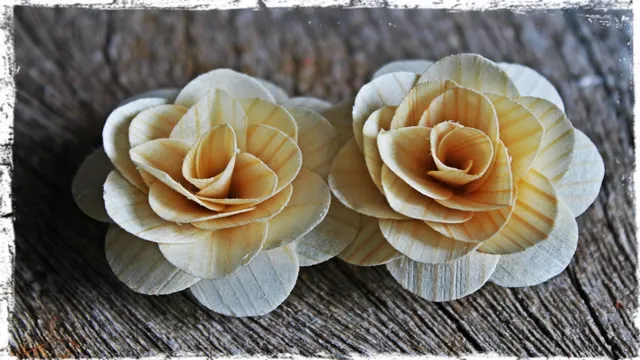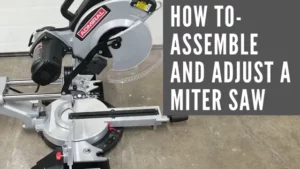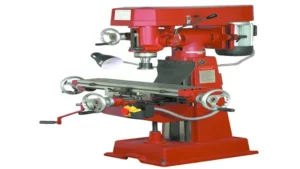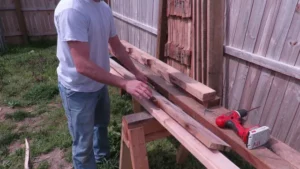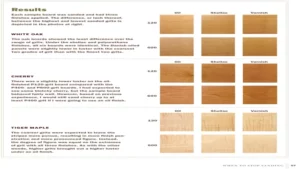Have you ever received a wooden rose as a gift and wondered how it was made? Well, you’re in luck because in this blog post, we’re going to show you how to make your very own wooden rose! Not only is it a unique and thoughtful gift, but it’s also a fun and creative project that anyone can do. Making a wooden rose may seem intimidating at first, but it’s surprisingly easy. All you’ll need is some wood, a saw, sandpaper, and a bit of paint or stain.
The end result is a beautiful and natural-looking rose that will last forever. Plus, since you’re making it yourself, you can customize it to be any color or size you want. One of the best things about making a wooden rose is that you don’t need any previous woodworking experience.
The instructions are simple and easy to follow, and the end result is sure to impress. It’s also a great way to get your creative juices flowing and to express your artistic side. So whether you’re looking for a thoughtful gift or a fun and creative project, making a wooden rose is definitely worth trying out.
Follow our step-by-step instructions and you’ll have your very own beautiful wooden rose in no time!
Gathering Materials
So you want to make a wooden rose? Great! First things first, you’ll need to gather your materials. You’ll need a piece of wood, ideally one that is around 1 inch thick and 6-8 inches long. You’ll also need a saw, sandpaper, and a heat gun.
For the petals, you can use any type of thin wood, such as balsa wood, and for the stem, you can use a thin wooden dowel. You’ll also need some wood glue and perhaps some paint or wood stain if you want to add some color to your rose. Once you’ve gathered all your materials, it’s time to get started on the fun part: actually making your wooden rose!
Selecting the Wood
When it comes to creating beautiful woodworking projects, selecting the right wood is key. Before starting your project, think about the look and feel that you want to achieve. Different woods have unique characteristics that will affect the final outcome.
Oak, for example, is known for its durability and strength, making it perfect for furniture pieces that will get a lot of use. On the other hand, cherry wood is a popular choice for its rich, warm tones that deepen with age. When gathering materials, it’s important to choose high-quality wood that is free from knots, cracks, or other imperfections.
These flaws can weaken the wood and compromise your finished project. Look for wood that is straight and smooth, with a consistent grain pattern. With the right materials in hand, you’ll be well on your way to creating a beautiful and long-lasting woodworking project.
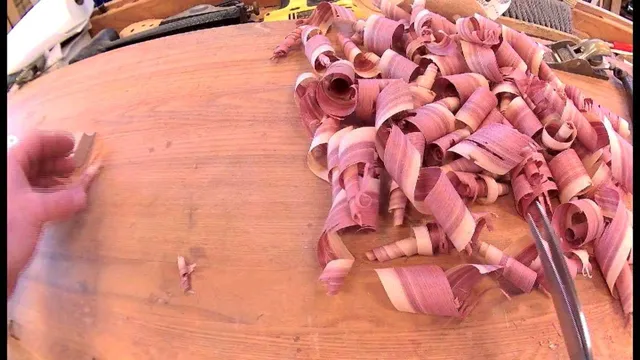
Tools Needed
When gathering materials for any project, it is essential to have the right tools to ensure its success. In this case, you’ll need some basic tools to get started with your DIY project. The first thing to consider is the type of project you’ll be working on.
For example, if you’re building a bookshelf, you’ll need a saw, measuring tape, level, drill, and screws. If you’re painting a room, you’ll require paint, a roller, a tray, masking tape, and drop cloths. Of course, depending on your project’s complexity, you might need more specialized tools.
To make sure you have everything you need, it’s helpful to create a checklist of all the tools required before you start working. By having all the materials needed before starting the project, you can prevent any delays and ensure that everything runs smoothly. Remember to always wear proper safety gear such as safety goggles and gloves.
It will help to keep you safe while you work.
Cutting and Shaping the Wood
If you’re curious about learning how to make a wooden rose, you’ll first need to know how to cut and shape wood. The process of cutting wood is simple enough – you can use a saw to create strips of wood that will eventually become the petals of the rose. Once you’ve got your pieces cut to size, you’ll need to use a rotary tool to shape them.
This is where things can get a little tricky, as you’ll need to use a steady hand and plenty of patience to create the curves and folds that give a rose its distinctive shape. But with a little practice and some trial and error, you’ll soon be able to create beautiful wooden roses that will last for years to come. So don’t be afraid to experiment and try new things – with a bit of creativity and determination, you’ll be able to make something truly special.
Cutting Out Petals
When it comes to woodworking projects that involve creating flower shapes, cutting out petals is an essential step. To begin, you will need to select the type of wood you want to use for the petals. Once you have your wood selected, you can start cutting out the petal shapes.
Depending on the flower you are making, you may need to use different sizes and shapes of petals. To do this, you can use a variety of cutting tools such as jigsaws or bandsaws. After you have cut out all of your petals, it’s time to shape them.
You can use sandpaper or a router to create rounded edges and smooth out any jagged areas. By shaping the petals, you will create a more natural and flowing look to your finished project. Remember to take your time and ensure that each petal is cut and shaped correctly to achieve the desired effect.
With a little practice, cutting and shaping wood into petal shapes will become second nature.
Shaping the Petals
When it comes to creating wooden flowers, shaping the petals is one of the most crucial and creative steps. After cutting the petals from the wooden plank, you can use a sandpaper or a file to shape them to your desired form. However, it is essential to ensure that the petals are symmetrical to avoid distortion.
The shaping process is also an opportunity to add texture and depth to the petals. You can create curves, notches, or lines on the petals to create a natural and realistic look. Using a carving knife and heating tool can help to achieve a more intricate and detailed design, especially for more complex flowers like roses.
The shaping process is the key to creating wooden flowers that are unique and beautiful. By using your creativity, you can bring the petals to life and make them look like they are swaying in a gentle breeze. So, grab your tools, and let’s shape some petals!
Creating the Stem
Creating the stem of a woodwind instrument is a critical step in the crafting process. It involves choosing the right wood and carefully shaping it for optimal sound quality. Different types of wood have unique resonant properties, which affect overall sound quality.
Common woods used for creating the stem include maple, rosewood, and ebony. The wood is first cut into a rough shape and then dried for several months to remove any excess moisture. After drying, the wood is shaped with precision tools such as a lathe or carving knives.
Experienced craftsmen take extra care during this step to ensure that the stem is symmetrical and balanced, which helps to produce a crisp and clear sound. Another vital aspect of creating the stem is determining the bore dimensions, which dictates the overall tone quality. The bore dimensions must be crafted to ensure an ideal blend of warmth and projection.
Overall, creating the stem is a crucial step in the process of crafting a woodwind instrument that produces a beautiful sound.
Assembly
If you have followed the previous steps, now comes the exciting part – assembling your wooden rose! First things first, take your wooden petals and arrange them in a circular shape to create the flower head. Use your wooden dowel to thread through the holes you have previously drilled in the center of each petal. Once all the petals are threaded through the dowel, secure them using wood glue.
Next, take your green wooden wire and wrap it around the wooden dowel to create the stem. You can also use wood glue to secure the wire in place. Finally, give your rose some character by using sandpaper to smooth out any rough edges or add some texture to the petals.
And voila! You now have your very own handmade wooden rose, perfect for decorating your home or gifting to a special someone.
Putting the Petals Together
When it comes to assembling a flower arrangement, the final touches can make all the difference. Putting the petals together requires a bit of patience and creativity. First, gather all of the blooms and foliage that you want to include in your arrangement.
It’s best to start with your larger flowers, trimming their stems to the appropriate length and placing them in the vase at varying heights for a natural look. Next, add in your filler flowers and greenery, using them to fill in any gaps or add texture. Finally, take a step back and evaluate your arrangement as a whole.
Make any necessary adjustments and don’t be afraid to experiment until you get the look you desire. By following these simple steps, you’ll be able to create a stunning flower arrangement in no time.
Attaching the Stem
When it comes to assembling a stem onto your bicycle, there are a few key steps to follow. The first step is attaching the stem to the handlebars. To do this, you’ll want to first make sure that your stem is the correct size and type for your bike and handlebars.
Then, loosen the faceplate bolts on the stem, place the handlebars onto the stem, and ensure that they are level and aligned properly. Once you’ve done this, you can tighten the faceplate bolts to secure the handlebars in place. From there, you’ll want to place the stem onto the fork steerer tube and tighten the top cap bolt to secure it.
Finally, adjust the stem so that it’s angled correctly for your riding style, tighten the stem bolts, and test the bike to make sure everything is secure and functioning properly. With these steps, you’ll have your stem securely attached to your bicycle and ready for your next ride!
Finishing Touches
Now that we’ve created the perfect wooden rose, it’s time for the finishing touches! To really make your rose stand out, you can add a bit of color to the petals. Some people prefer to paint their roses with a light coat of acrylic paint for a more natural look, while others might prefer to use bold colors to make a statement. No matter what you choose, make sure to let the paint dry completely before handling your rose.
Another way to add some flair to your wooden rose is to wrap the stem with a bit of green floral tape or ribbon. This will not only add a pop of color but also give the stem a more realistic feel. Lastly, you can use a bit of sandpaper to smooth out any rough edges or imperfections on your rose.
This extra step will make your wooden rose look even more professional and polished. So go ahead and experiment to find the perfect finishing touches that will make your wooden rose truly shine!
Sanding and Painting the Rose
Sanding and painting are the finishing touches that will bring the rose to life. Before sanding, it’s crucial to ensure that the wooden rose is completely dry. You can use a sanding block or a piece of sandpaper to smooth out any rough edges that might be left on the surface.
Once you’re satisfied with the smoothness of the rose, you can move on to painting. Choose the color and finish that you prefer but keep in mind the type of paint on which the wooden rose will be applied. Consider spraying the rose with primer before painting, which will make the surface smooth and make the paint stick better.
Remember to apply two to three coats of paint, allowing each coat to dry completely before applying the next. You will be amazed at how stunning the rose looks after the sanding and painting process is complete. A simple wooden rose has transformed into a true masterpiece with these finishing touches.
Adding Leaves or Thorns
Adding the finishing touches to your art can make all the difference. When it comes to botanical illustrations, adding leaves or thorns can help bring the piece to life. It’s important to observe and sketch the details of leaves or thorns realistically, paying attention to the shape, size, and texture.
For leaves, you can use a variety of greens to create depth and dimension. Thorns, on the other hand, can add an extra layer of complexity and sharpness to your drawing. With careful observation and a steady hand, adding these details can truly elevate your botanical illustration.
Conclusion
And there you have it, the perfect wooden rose! With just a little bit of effort and a whole lot of creativity, you can bring the beauty of nature into your home with this unique piece of art. As they say, practice makes perfect, so don’t be discouraged if your first attempt isn’t exactly what you had in mind. Keep trying and experimenting until you’ve created a bouquet of wooden wonders that would make even Mother Nature jealous.
So go ahead, unleash your inner craftsman and let your imagination blossom!”
FAQs
What materials do I need to make a wooden rose?
To make a wooden rose, you will need a wooden dowel, thin wooden shavings, glue, and a cutting tool.
What is the best type of wood to use for making wooden roses?
The best type of wood to use for making wooden roses is basswood, as it is easy to carve and shape.
Is it difficult to make a wooden rose by hand?
Making a wooden rose by hand can be challenging for beginners, but with practice and patience, anyone can learn to make one.
Can I use a wood-burning tool to create details on my wooden rose?
Yes, a wood-burning tool can be used to create intricate details on your wooden rose, such as the leaf veins and petal lines.
How do I dye or stain my wooden rose?
To dye or stain a wooden rose, first, sand down any rough spots and then apply the chosen stain or dye with a brush or cloth, following the manufacturer’s instructions.
Is it possible to make wooden roses in different colors?
Yes, you can make wooden roses in different colors by using different types of wood and staining or dyeing them according to your preferences.
What is the best way to display a wooden rose?
A wooden rose can be displayed in a vase or as part of a flower arrangement, or you can attach it to a stem and display it as a single flower.
